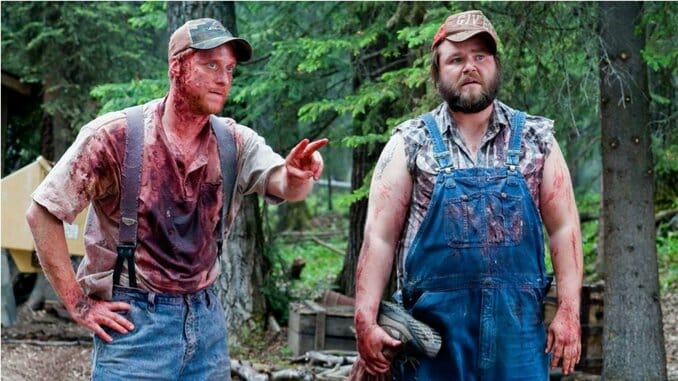Tucker and Dale Vs. Evil

Let’s face it, hillbillies and their ilk have been getting the short end of the pitchfork in movies since the strains of banjo music faded in 1972’s Deliverance. And whether due to radiation (The Hills Have Eyes) or just good old determined inbreeding (Wrong Turn and so, so many films you’re better off not knowing about), the yokel-prone in film have really enjoyed slaughtering innocent families on vacation, travelers deficient in basic map usage skills, and, best of all, sexually active college students just looking for a good time.
But fear not, members of Hillbillies for Inclusion, Consideration & Kindness in Screenplays (HICKS)—writer/director Eli Craig has your hairy, unloofahed back. In his new film, Tucker & Dale vs. Evil, Craig presents an equally plausible take on the state of the strained hillbilly-“normal” people relations that have so fascinated horror filmmakers for 40+ years. Craig is best known for, well, nothing much to this point (though he is the son of actress Sally Field), but that all changes with Tucker & Dale vs. Evil.
Craig’s first full-length film—he’s also a co-writer—answers the simple question: What if those hillbillies are just socially awkward fellows sprucing up a vacation home and the young college kids in question are just prone to repeatedly jumping to incorrect, often fatal, conclusions? Think Final Destination meets the Darwin Awards. (These kids are perfectly capable of offing themselves—Death can take it easy.)
-

-

-

-

-

-

-

-

-

-

-

-

-

-

-

-

-

-

-

-

-

-

-

-

-

-

-

-

-

-

-

-

-

-

-

-

-

-

-

-








































